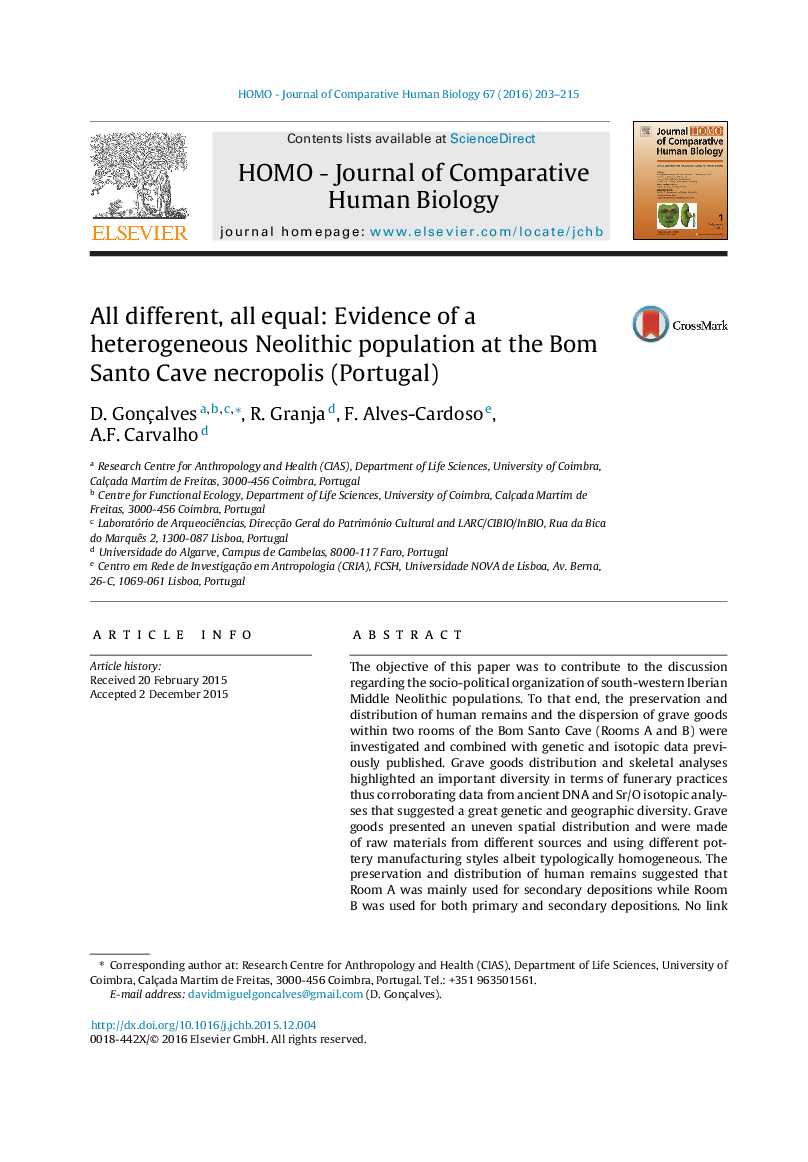| کد مقاله | کد نشریه | سال انتشار | مقاله انگلیسی | نسخه تمام متن |
|---|---|---|---|---|
| 100023 | 160957 | 2016 | 13 صفحه PDF | دانلود رایگان |
The objective of this paper was to contribute to the discussion regarding the socio-political organization of south-western Iberian Middle Neolithic populations. To that end, the preservation and distribution of human remains and the dispersion of grave goods within two rooms of the Bom Santo Cave (Rooms A and B) were investigated and combined with genetic and isotopic data previously published. Grave goods distribution and skeletal analyses highlighted an important diversity in terms of funerary practices thus corroborating data from ancient DNA and Sr/O isotopic analyses that suggested a great genetic and geographic diversity. Grave goods presented an uneven spatial distribution and were made of raw materials from different sources and using different pottery manufacturing styles albeit typologically homogeneous. The preservation and distribution of human remains suggested that Room A was mainly used for secondary depositions while Room B was used for both primary and secondary depositions. No link between the two rooms was found since remains from the same individuals were apparently exclusive of one room or another. The results suggest that this society presented substantial inner genetic, social and geographical heterogeneity. Most probably, this was due to the presence of distinct but coeval groups in the cave that shared a larger-scale social identity (as in “segmentary societies”) or, less likely, to the presence of one single, but internally heterogeneous society (as in fully sedentary societies) that assimilated foreigners.
Journal: HOMO - Journal of Comparative Human Biology - Volume 67, Issue 3, June 2016, Pages 203–215
